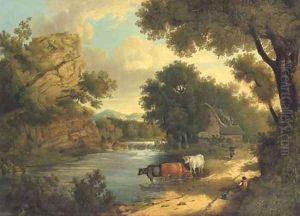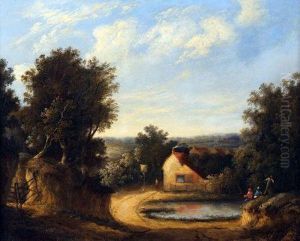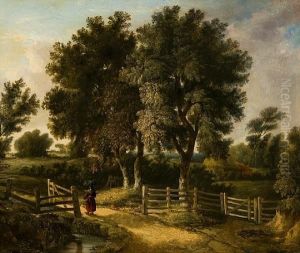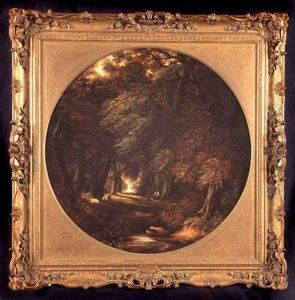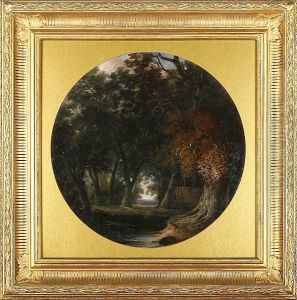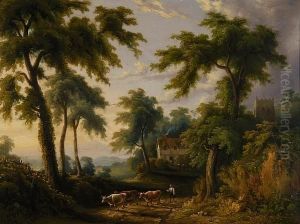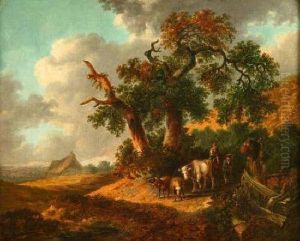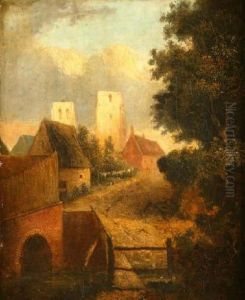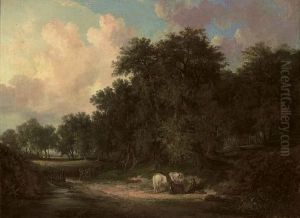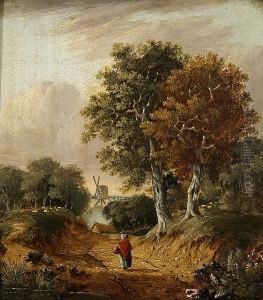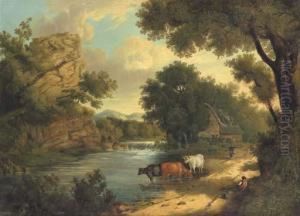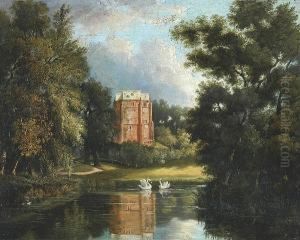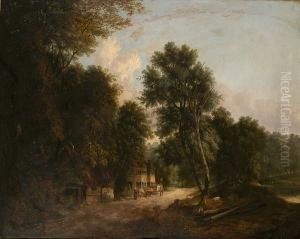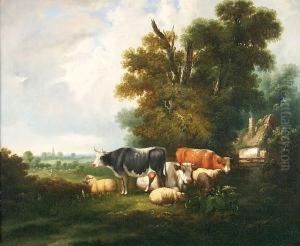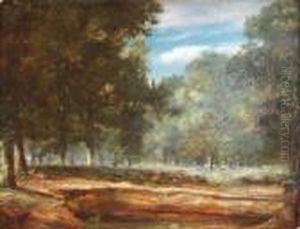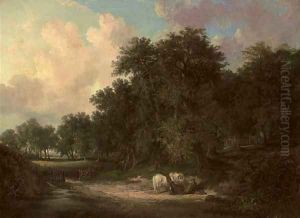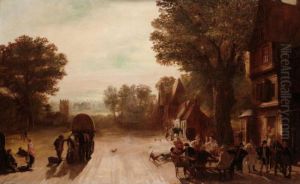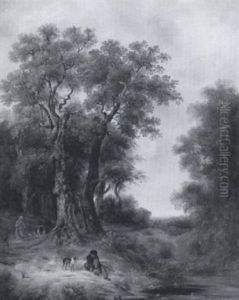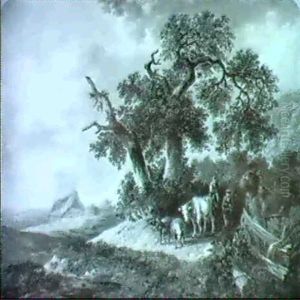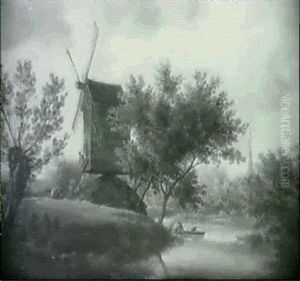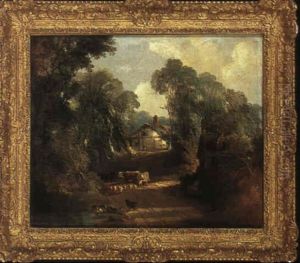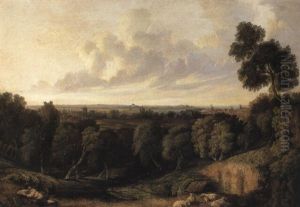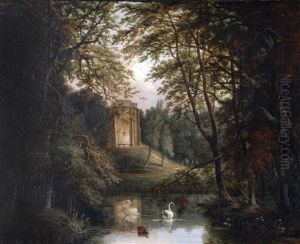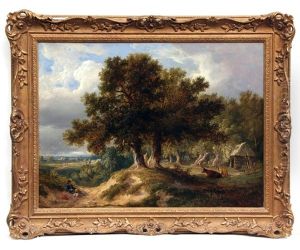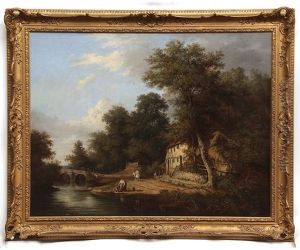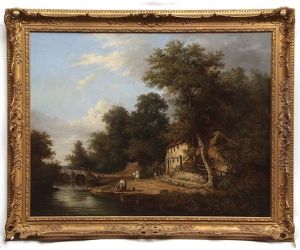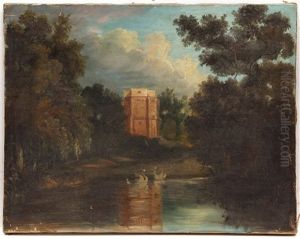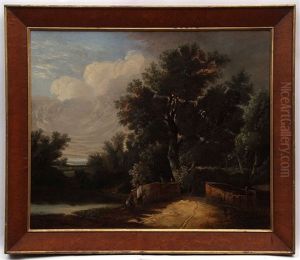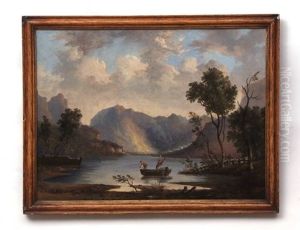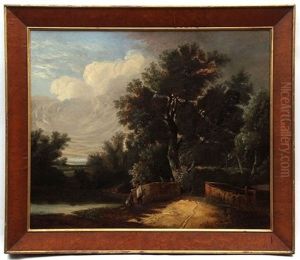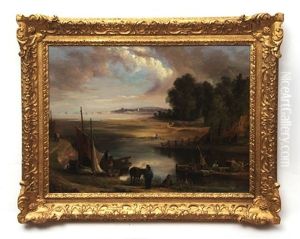Henry Ladbrooke Paintings
Henry Ladbrooke was an English landscape painter, born in 1800 in Norfolk, England. He was part of the Norwich School of painters, a movement that was the first provincial art movement in Britain, known for its unique dedication to landscape painting and its strong sense of regional identity. The Norwich School was established in the early 19th century and included artists such as John Crome and John Sell Cotman, both of whom had a significant influence on Ladbrooke's work.
Henry Ladbrooke was initially taught by his uncle, Robert Ladbrooke, who was also a notable figure within the Norwich School. This familial connection provided Henry with an early entry into the world of art and landscape painting. Throughout his career, Henry Ladbrooke became known for his detailed and picturesque landscapes that often depicted the Norfolk countryside. He had a particular talent for capturing the atmospheric effects of the English weather, from the soft mists of dawn to the golden hues of sunset.
Ladbrooke's work was well-received during his lifetime, and he exhibited at various prestigious venues, including the British Institution and the Royal Academy. Despite the acclaim, he often struggled financially, a common plight among artists of his time. His paintings, however, have continued to be appreciated for their contribution to the British landscape tradition and the Norwich School's legacy.
Henry Ladbrooke's legacy is not just in his paintings but also in his contribution to the development of landscape painting in Britain. His works provide a valuable insight into the 19th-century English countryside and the early efforts to capture its beauty and diversity. Ladbrooke died in 1879, leaving behind a body of work that continues to be studied and admired for its beauty and historical value.
